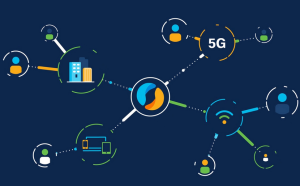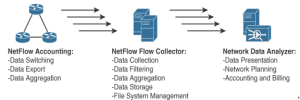PIM Source-Specific Multicast (PIM-SSM) is a variant of PIM-SM that builds trees that are rooted in just one source. SSM, defined in RFC 3569, eliminates the RPs and shared trees of sparse mode and only builds an SPT. SSM trees are built directly based on the receipt of group membership reports that request a given …
Category: Certification Exams of Cisco 300-420
Aug 20
IPv6 Multicast Addresses – IP Multicast and Network Management
IPv6 retains the use and function of multicast addresses as a major address class. IPv6 prefix FF00::/8 is allocated for all IPv6 multicast addresses. IPv6 multicast addresses are described in RFC 2373. The EIGRP for IPv6, OSPFv3, and RIPng routing protocols use multicast addresses to communicate between router neighbors. The format of the IPv6 multicast …
Jul 20
SNMP – IP Multicast and Network Management
Simple Network Management Protocol (SNMP) is an IP application layer protocol that has become the standard for the exchange of management information between network devices. SNMP, which was initially described in RFC 1157, is a simple solution that requires little code to implement and allows vendors to build SNMP agents on their products. SNMP runs …
Jun 20
MIB – IP Multicast and Network Management
A Management Information Base (MIB) is a collection of information that is stored on the local agent of a managed device. MIBs are organized hierarchically and are accessed by the NMS. MIBs are databases of objects organized in a tree-like structure, with each branch containing similar objects. Each object has an object identifier (number) that …
May 11
SNMPv2 – IP Multicast and Network Management
SNMPv2, defined in RFCs 1901 and 1902, is an evolution of the initial SNMPv1. SNMPv2 offers improvements to SNMPv1, including additional protocol operations. The Get, GetNext, and Set operations used in SNMPv1 are exactly the same as those used in SNMPv2. The SNMP Trap operation serves the same function as in SNMPv1, but it uses …
Mar 15
NetFlow 2 – IP Multicast and Network Management
The NetFlow export or transport mechanism sends the NetFlow data to a collection engine or network management collector. Flow collector engines perform data collection and filtering. They aggregate data from several devices and store the information. Different NetFlow data analyzers can be used, depending on the intended purpose. NetFlow data can be analyzed for the …
Jan 14
NetFlow – IP Multicast and Network Management
Cisco NetFlow enables tracking of IP flows as they are passed through routers and multilayer switches. An IP flow is a set of IP packets within a specific time slot that share a number of properties, such as the same source address, destination address, type of service, and protocol number. NetFlow information is forwarded to …
Nov 25
NetFlow Compared to RMON and SNMP – IP Multicast and Network Management
NetFlow enables you to gather more statistical information than RMON with fewer resources. It provides greater detail on the collected data, with date- and timestamping. NetFlow has greater scalability and does not require network probes. NetFlow reports on traffic statistics and is push based, whereas SNMP reports primarily on device statistics and is pull based. …
Aug 20
LLDP – IP Multicast and Network Management
Link Layer Discovery Protocol (LLDP), defined in the IEEE 802.1AB (LLDP) specification, is an option for discovering network devices in multivendor networks. LLDP performs functions similar to those of CDP. With LLDP, devices send information at a fixed interval from each of their interfaces in the form of an Ethernet frame with Ethertype 0x88CC. The …
Jun 05
Hierarchical Network Models – Enterprise LAN Design and Technologies
Hierarchical models enable you to design internetworks that use specialization of function combined with a hierarchical organization. Such a design simplifies the tasks required to build a network that meets current requirements and that can grow to meet future requirements. Hierarchical models use layers to simplify the tasks for internetworking. Each layer can focus on …






